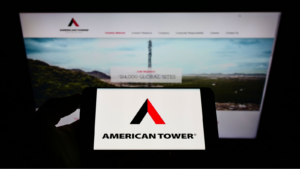As geopolitical and broad market instabilities heat up, we’ve seen a flight to safety of risk-free assets. The REIT sector has been one of the worst-performing sectors within the S&P 500 in 2023, with higher rates playing a significant role.
Certain REITs should be sold in the present market environment of high-interest rates, surging bond yields, and narrow market breadth. These companies are simply too risky to hold, especially since they were already in troubled waters.
Now, investors need the final push sell their holdings. Therefore, it’s probable that these REITs to sell with high leverage and dwindling occupancies are the next to go on the chopping block this month.
W.P Carey (WPC)

Especially with the trend of higher rates,W.P Carey (NYSE:WPC) is a REIT that has been significantly impacted recently, .
WPC is exiting the office real estate market due to a pandemic-induced rise in remote work, leading to decreased demand for office spaces. They plan to spin off or sell all office assets to lower capital costs and enhance shareholder value. This decision caused a nearly 8% drop in the company’s shares amid its announcement.
Furthermore, the company had a 24-year dividend growth streak, which it is now abandoning amid its 20% dividend cut to free up cash flow. The market sees this as a lack of confidence in the company’s future. And historical data suggests that companies cutting dividends tend to underperform. Investors do not trust WPC’s management due to this unexpected move.
American Tower (AMT)

American Tower (NYSE:AMT) operates the world’s most extensive independent portfolio of wireless communications and broadcast towers. While the company has a strategy of diversifying its portfolio internationally, it faces headwinds in markets like India.
Despite revenue increases, the company faces declining operating margins and a rising debt burden, making its debt increasingly expensive. According to some analysts, AMT’s use of leverage is also seen as value-destroying for shareholders. Further, its strategy of cutting operating expenses is not a sustainable solution to its margin problem.
In a high-interest rate environment, excessive leverage may pose undue risk.
Public Storage (PSA)

Public Storage (NYSE:PSA) is the largest owner of self-storage facilities in the U.S. Despite being in a recession-resistant industry, it might face challenges due to broader market sentiment.
Also, PSA stock may be unable to navigate some notable company-specific risks. Despite an increase in move-ins, PSA faces a net decrease in overall tenants. Also, the company is struggling to attract new tenants at total prices. Prices have been over-extended, causing rents to revert to the mean. And with a significant amount of new storage facility space expected to come online, the market will become further saturated.
Additionally, trends like remote work and urban flight, which previously boosted the self-storage industry, seem to be waning. Thus, the valuation of Public Storage appears high relative to its future growth expectations.
On the date of publication, Matthew Farley did not have (either directly or indirectly) any positions in the securities mentioned in this article. The opinions expressed are those of the writer, subject to the InvestorPlace.com Publishing Guidelines.
